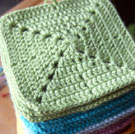Making Sauerkraut
January 24th, 2020
We’ve been making our own sauerkraut since 2014-ish when we found out about all its probiotic health benefits. It took us a while to get used to the sharp taste, but now we love it and enjoy it mixed in with our green salads, on a burger, or simply as a side to any meal.
I make a big batch of it every few months and always make it with a mix of green and red cabbage, carrots and beets. Not only does this add a little sweetness to curb the sharpness, the beautiful red colours in the vegetables are richer in lycopene and anthocyanins. Both are powerful antioxidants that strengthen the immune system, help prevent cancer, fight infections, reduce blood pressure and inflammation. (You can learn more about lycopene here, and anthocyanin here.)
Angie’s Special Sauerkraut Recipe:
- Whenever possible, use organically grown vegetables.
- Salt ratio is 1 Tablespoon per 1.75 lb (800 grams) weight of vegetables.
- I like to make a big batch that fills up 2 half gallon jars. To make a smaller batch you will need to reduce the amounts to your liking.
- Hand chopping the vegetables is my preferred way, but you can also use a food processor that has a slicing blade. I have done both ways and find that hand chopping makes for a crunchier sauerkraut rather than a limp one.
- Instead of using my hands to massage salt through the vegetables, I like to use a vegetable pounder to bruise the vegetables into releasing its liquid.
Below is a list of kitchen gadgets and tools that I use for making sauerkraut (links are to Amazon):
wide mouth half gallon jars (wide mouth quart jars work well too)
wide mouth plastic BPA free lids
8″ chef’s knife
knife sharpener
bamboo cutting board
wooden vegetable pounder
canning funnel
glass weights
Although I chop by hand, this is the food processor that has a slicing blade I have used in previous times.
Ingredients:
*using the ratio of 1 Tablespoon per 1.75lb (800gr), I used a total of 5 Tablespoons for this batch as my total weight of vegetables was around 9lbs (4kg)
Directions:
- Take off the tough outer layers of cabbage. Save a couple of nicer looking leaves to use to help weigh down and keep vegetables under liquid.
- Peel carrots and beets.
- Weigh all the vegetables so that you have a total weight. Work out how much salt you will need using the ratio 1 Tablespoon per 1.75lb (800gr).
- Using a sharp knife (making sure it’s sharp really makes a difference to the ease of chopping by hand), slice cabbage, carrots and beets into thin strips. Slice the red onion also, but do that last.
- I usually work in batches starting with chopping about 1/2 cabbage, placing it into a very large stainless steel bowl, adding a carrot, then a beet, 1 Tablespoon salt, mixing it all up and then pounding for a few minutes, chop more cabbage, carrot, and beet, add that to the bowl along with salt, mix and pound again, continue until all vegetables have been chopped. I like to chop and add the onion at the end so that I am not crying the entire time.

Working in batches, I chop, mix and pound, and while I chop the next batch the vegetables have a chance to interact with the salt and release its liquid.

After all the cabbage, carrots, beets and salt are in the bowl, I slice the red onion and add that to the mix. Sprinkle the caraway seeds on top and mix through. The colours are so beautiful and will deepen as time goes on.
- You can now start filling the jars with the shredded vegetables. Using a canning funnel makes scooping the vegetables in easier.
- Tamp down the vegetables with the vegetable pounder. More juices will be released.
- Leave at least two inches (5cm) headspace at the top. Make sure vegetables are completely under liquid as this will help prevent the sauerkraut from spoiling from molds and yeasts that can use the oxygen in the air.
- If there is not enough liquid, you can make a 2% brine solution to add to the jar. Dissolve 1 Tablespoon salt to 4 cups of boiled water. Wait for the brine to cool to room temperature before adding to the jar (you do not want the hot water to kill off the good bacteria on the vegetables). Any leftover brine can be refrigerated indefinitely and used for future sauerkraut (or for pickling).
- Tear a cabbage leaf to size so that it fits inside the mouth of the jar to cover the vegetables. It is fine if you overlap two pieces to make it fit. Place a glass weight on top to hold the cabbage leaf in place (see below).


I place my jars in a glass baking dish to catch the overflow liquid as the vegetables ferment.

This is 3 days of fermenting. Notice how the liquid has reached the top of the jar. Good thing I left the 2 inches of headspace.

This is a sure sign that it’s alive and the lactobacilli are doing their thing.
Usually it takes about a week of fermenting to be ready. This varies depending on the temperature of the room (the warmer it is, the faster it will ferment), but 7 days tends to be a good amount of time for me.
You can check on it and do a taste test to determine when it’s done and then refrigerate it. I have found that the sauerkraut can keep for several months in the refrigerator. Enjoy!
This is a great book if you are interested in more recipes and learning about fermenting and preserving a whole range of vegetables: “Fermented Vegetables” by Christopher and Kirsten Shockey

 The Making of a Patchwork Fairy Pig
The Making of a Patchwork Fairy Pig A Crochet Project in Progress: Starburst Granny Square Blanket
A Crochet Project in Progress: Starburst Granny Square Blanket Hedgehog and Cupcake Amigurumi Crochet
Hedgehog and Cupcake Amigurumi Crochet Rainbow of Love
Rainbow of Love

